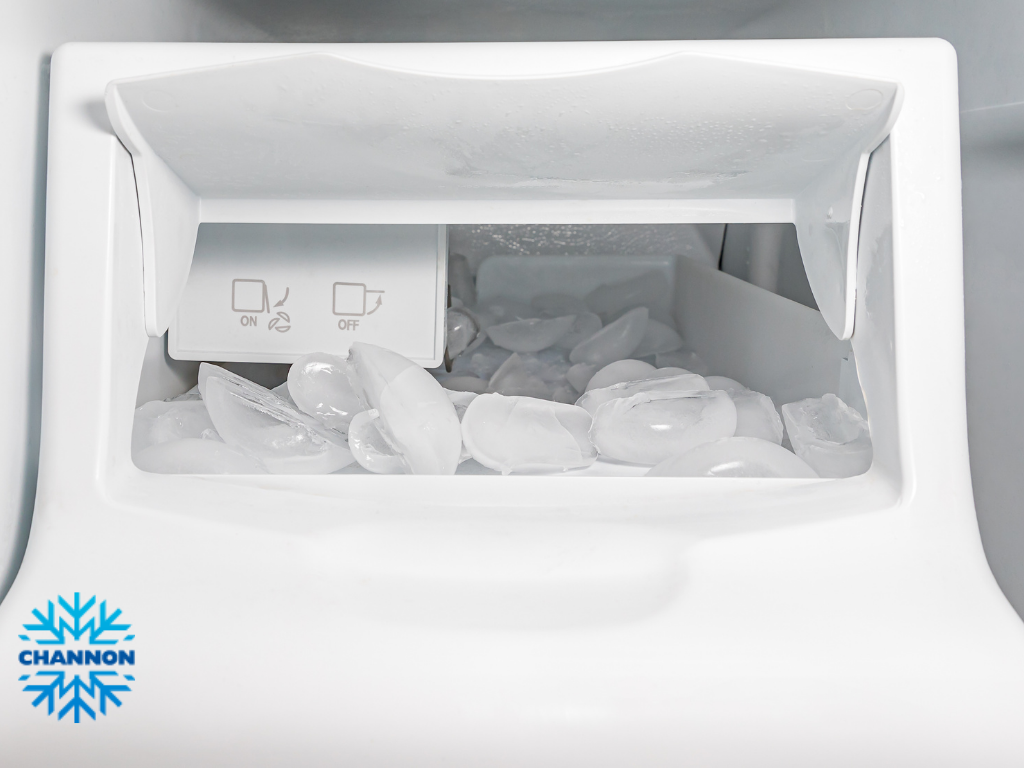Ice machines, particularly commercial ice machines, are pivotal to numerous businesses, providing the necessary ice production to meet the demands of customers and day-to-day operations. But how do these machines work, and what steps are necessary to ensure their efficient function over time?
Understanding the Mechanics of Ice Makers
At the heart of every ice maker is the refrigeration cycle. This process involves a compressor, a condenser, an evaporator, and other components working in harmony to freeze water into various ice forms.
Commercial ice machines begin this cycle when water from the supply line enters the machine, filling the ice mold in the process. The refrigeration system then cools down to a freezing point, turning the water into ice.
The type of ice produced varies depending on the design of the ice maker. Some commercial ice makers create the traditional cube ice, perfect for a wide array of uses, while others might produce flake or nugget ice, favored in healthcare or culinary presentations.
Regardless of type, the consistency in production is crucial, and that’s where understanding your machine’s operation and maintenance becomes essential.
The Significance of Regular Maintenance
Maintaining your commercial ice machine isn’t just about ensuring consistent ice production; it’s also about preserving the quality of the ice provided. Factors like mineral buildup or unnoticed mold growth can affect both the flavor of the ice and the health of your consumers. Routine cleaning and sanitizing of your ice maker can prevent these issues, safeguarding your reputation and your customers’ well-being.
Beyond cleanliness, proper maintenance also involves regular inspections of the machine’s components. Over time, parts like the water filter will need replacement, or the condenser coils might require cleaning to ensure efficiency. Failure to maintain these components can not only lead to lower quality ice but potentially disrupt production, affecting your business operations.
Troubleshooting Common Issues in Commercial Ice Machines
Even with diligent maintenance, commercial ice machines can encounter issues. Whether it’s inconsistent ice sizes, slow production, or mechanical malfunctions, knowing how to troubleshoot these problems—or when to call in a professional—can save significant time and money.
For instance, if your ice machine is producing smaller or larger cubes than usual, it might be a water flow issue. Check the water supply and the machine’s settings to ensure it’s receiving the necessary amount for standard operation.
If the machine isn’t producing ice at its usual rate, the issue could be a dirty condenser or an environmental factor like room temperature. Regular checks and understanding your machine’s norms and indicators can swiftly highlight these problems, allowing for quick intervention and resolution.
Exploring the Intricacies of Ice Machines: Operation and Upkeep
Dive into the mechanics of ice machines, exploring their fundamental components and the vital practices for their maintenance. Understanding the nuances of how these machines operate can significantly influence their efficiency, longevity, and the quality of ice produced.
Which are the Best Ice Machines?
The best ice machines often combine efficiency, durability, and ease of use. Brands like Hoshizaki, Manitowoc, and Scotsman have earned reputations for producing high-quality ice makers that consistently meet various commercial needs.
The choice of the best machine can depend on factors such as the volume of ice needed, the type of ice preferred, and specific operational requirements of a business.
What are the 3 Major Components of an Ice Machine?
- The Compressor: The compressor functions as the heart of the refrigeration system, circulating refrigerant throughout and transforming low-pressure gas into high-pressure gas, which is then cooled in the condenser.
- The Condenser: The condenser is where the hot, high-pressure gas from the compressor is cooled down, turning it into a high-pressure liquid. This process involves the release of heat to the surrounding environment, either by air or water, depending on the type of condenser.
- The Evaporator: The evaporator is where the actual ice-making process happens. The high-pressure liquid refrigerant expands and turns back into a gas, absorbing heat from the surrounding water in the process, causing the water to freeze and form ice.
What are the Two Main Types of Ice Machines?
When it comes to commercial ice production, the two main types of ice machines are modular ice machines and self-contained ice machines.
Modular Ice Machines are typically larger, high-capacity machines that require a separate storage bin to hold the ice they produce. They are ideal for businesses with significant ice needs, as they can produce large amounts of ice quickly.
An example of this type is the “Crescent Ice Machine KM-100A,” known for its reliability and high-volume ice production capabilities.
Self-Contained Ice Machines, on the other hand, are smaller units with a built-in storage bin. This design makes them more compact and suitable for smaller spaces or businesses with moderate ice needs.
A notable example is the “Self Contained Ice Machine IM-130NE-28,” appreciated for its efficiency and space-saving design. This type of machine is perfect for establishments that need a consistent, yet not overwhelming, supply of ice.
Concluding Thoughts
Understanding the intricacies of how commercial ice machines work and the importance of regular maintenance is crucial for any business relying on consistent ice production. From the refrigeration cycle to the final ice product, every step matters in ensuring the efficiency, longevity, and reliability of your ice maker.
By embracing a proactive approach to maintenance and being equipped with troubleshooting knowledge, you can ensure your commercial ice machine serves your business effectively and efficiently for years to come.

